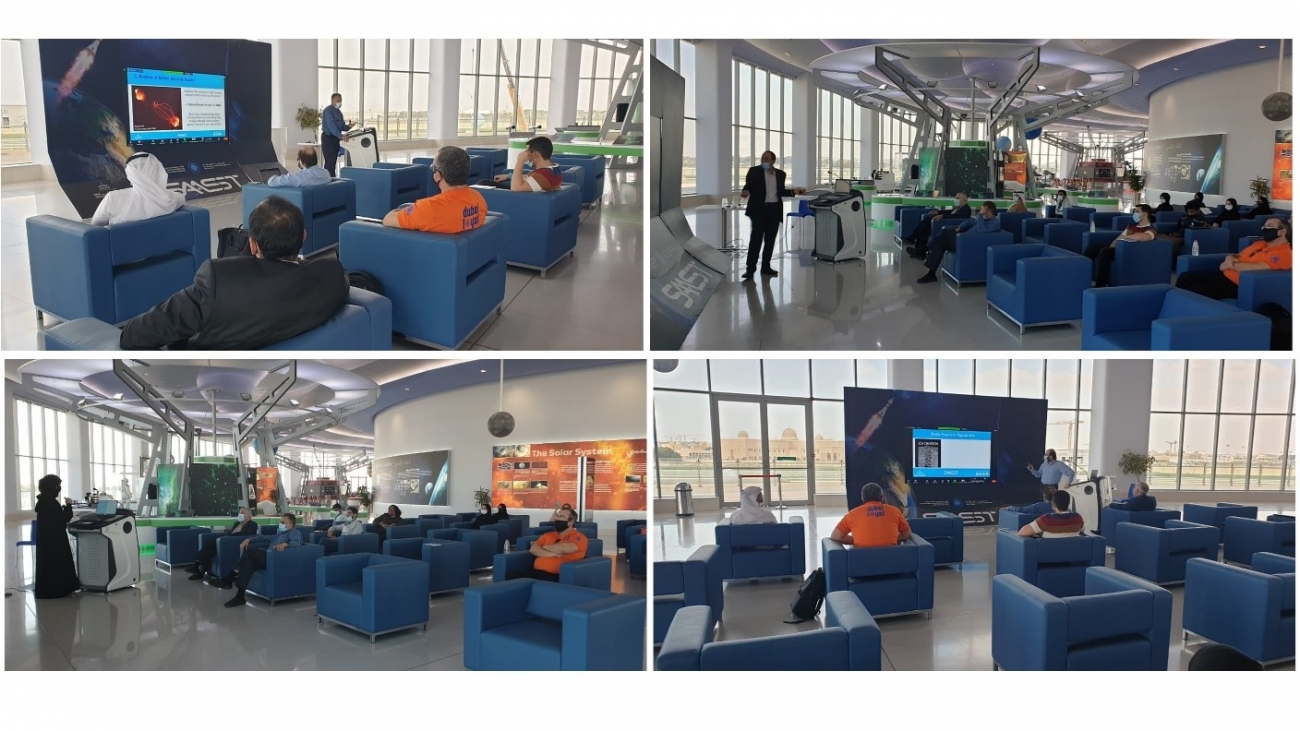Program:
09:00 – 09:45: Lecture 1 – Dr. Ilias Fernini – Introduction to Radio Astronomy
09:45 – 10:30: Lecture 2 – Mr. Mohamed Rihan - Antenna Arrays in Radio Telescopes.
10:30 – 11:15: Lecture 3 – Ms. Asmaa Abdulsalam – Radio Interferometers
Break
11:30 – 12:15: Lecture 4 – SAASST Radio telescopes - Practical Session
12:15 – 1:30: Lecture 5 – Dr. Antonios Manousakis – Radio Pulsars
1:30 – 2:15: Lecture 6 – Dr. Ilias Fernini – Radio Observations of AGN
Researchers, students, and faculty members attended the workshop to learn more about the academy's radio astronomy program. Lectures were given to initiate students and researchers to this field in light of the two main instruments (Decametric Radio Telescope [DRT] and the 40-m Radio Interferometer) that the academy has built on its premises. The DRT operates at 20.1 MHz and mainly observes the Sun and Jupiter. The interferometer works at 1.4 GHz and can observe the entire universe at this frequency.
Radio astronomy is the study of radiation from celestial sources at frequencies between n~ 10 MHz to 1 THz (107 to 1012 Hz). The observing window is constrained by atmospheric absorption, emission, and refraction. The highly charged particles in the ionosphere reflect radio waves back into space at < 10 MHz. Vibrational transitions of molecules have a similar energy to infra-red photons and absorb the radiation at > 1 GHz (all fit by ~ 300 GHz).
Besides the theoretical lectures, the audience had a unique experience to see how the DRT and interferometer work. Practical sessions were conducted by Mr. Rihan (DRT) and Asmaa (Interferometer) to have hands-on experience in observing radio sources.



